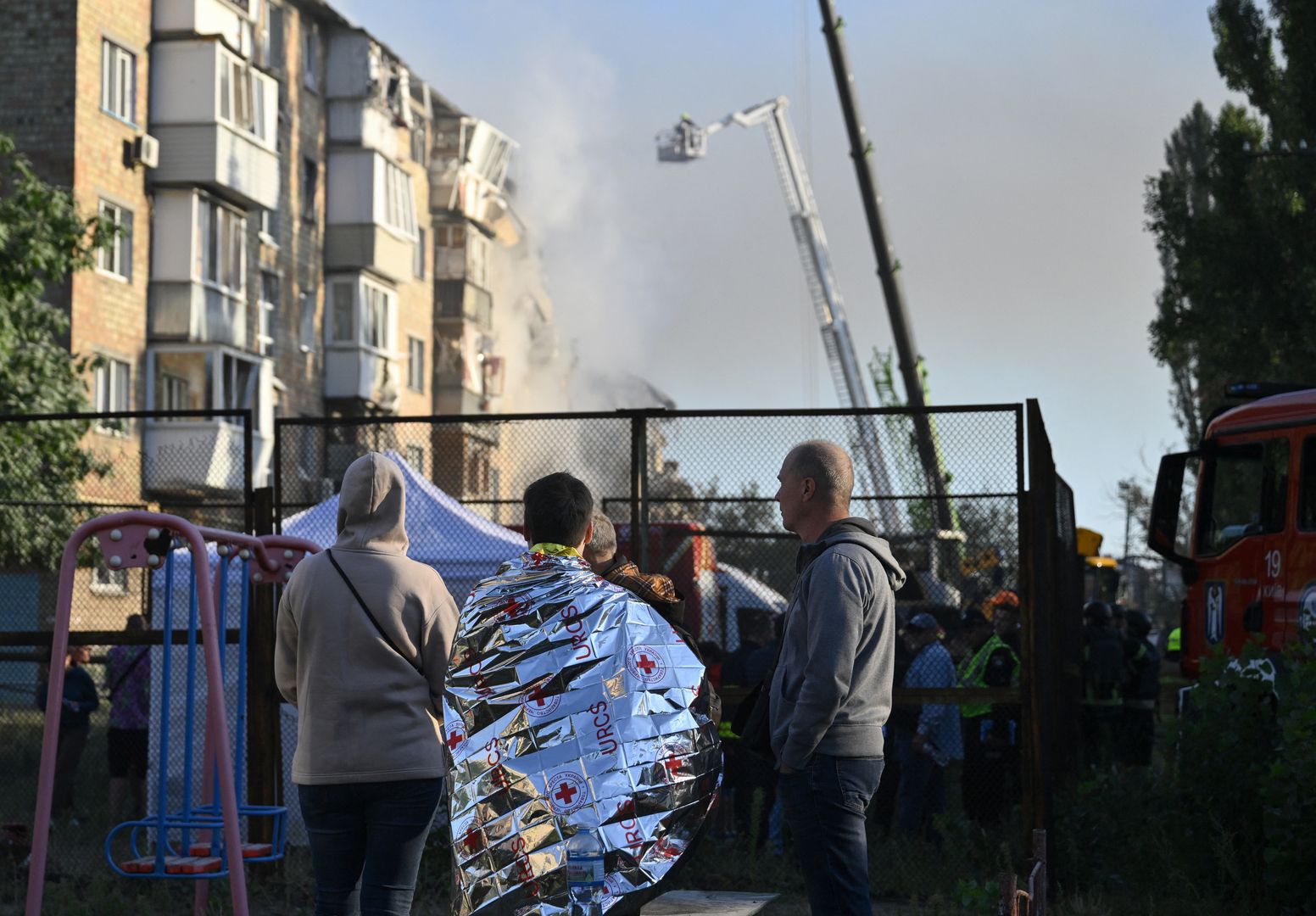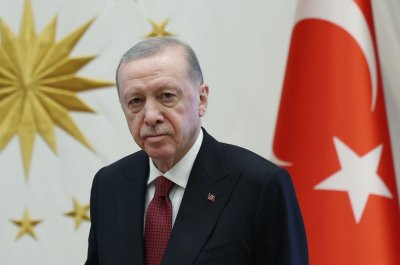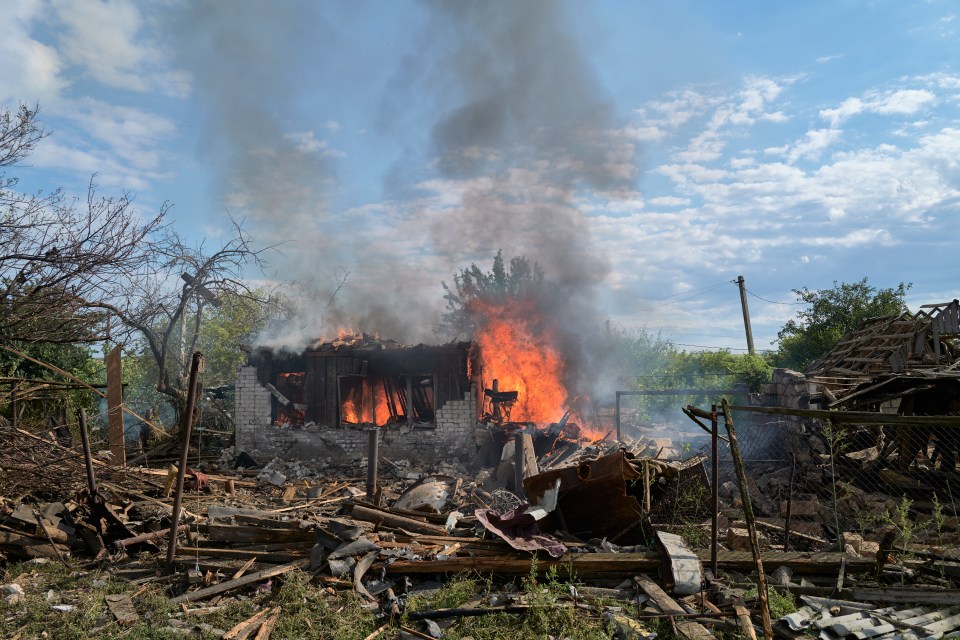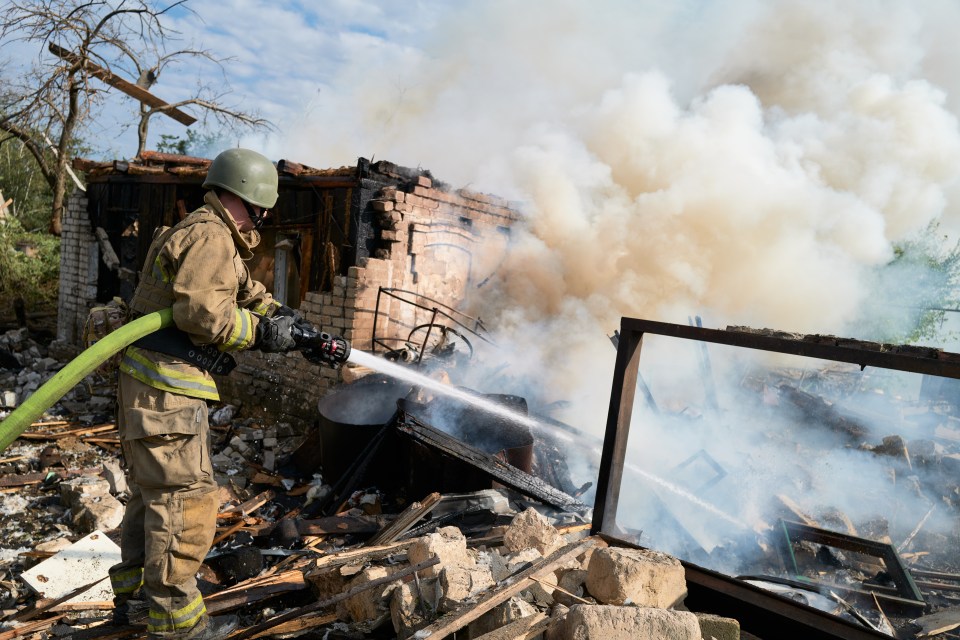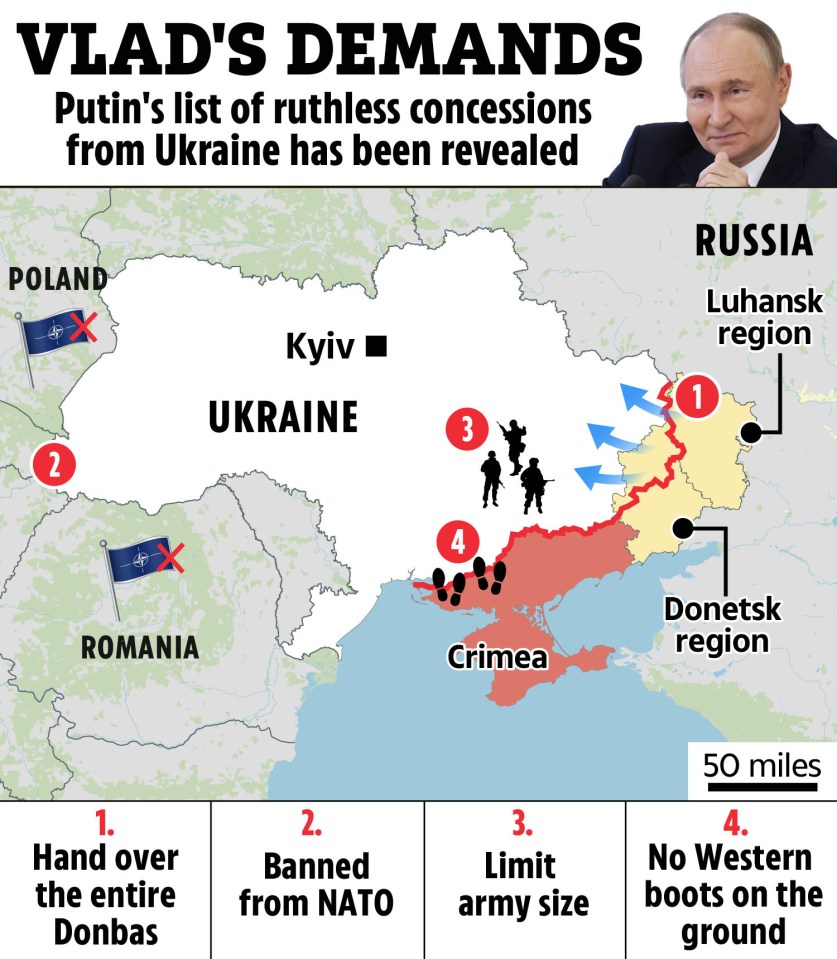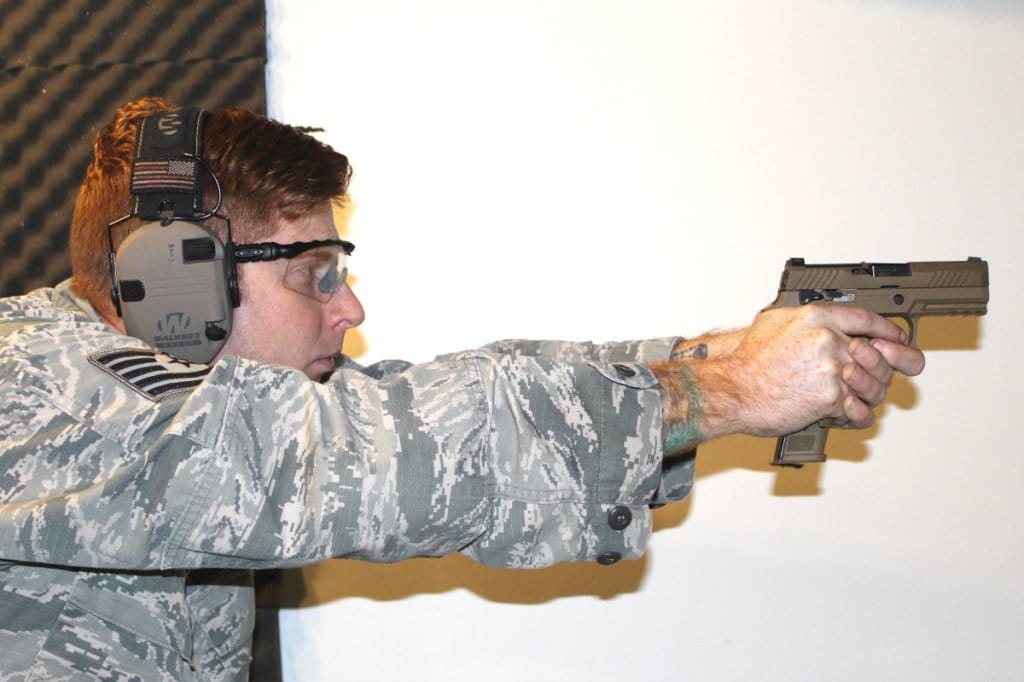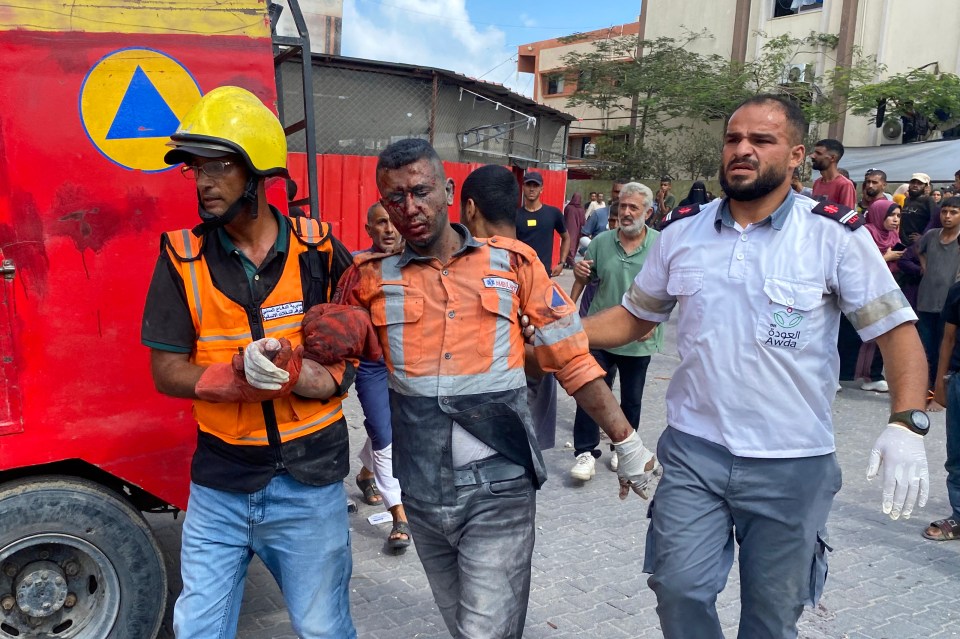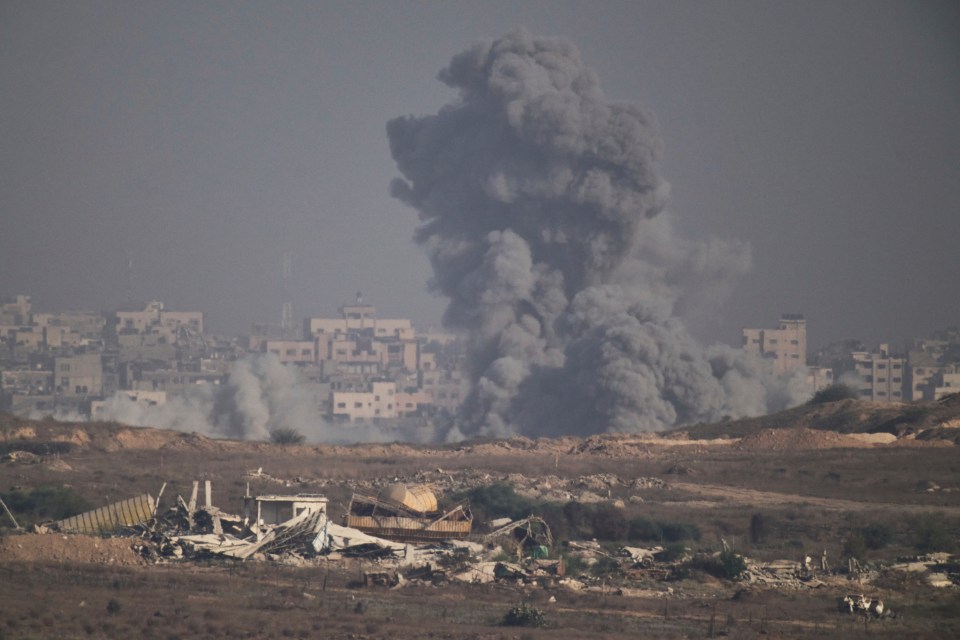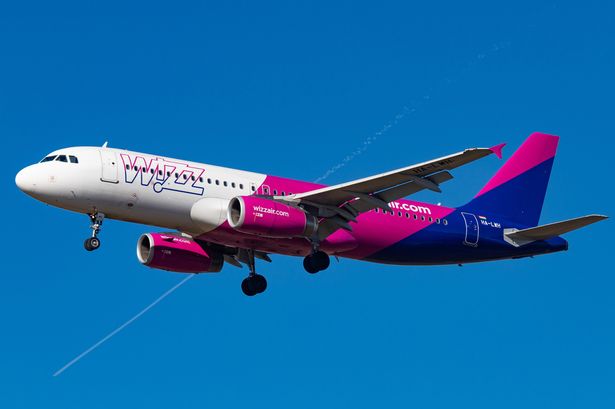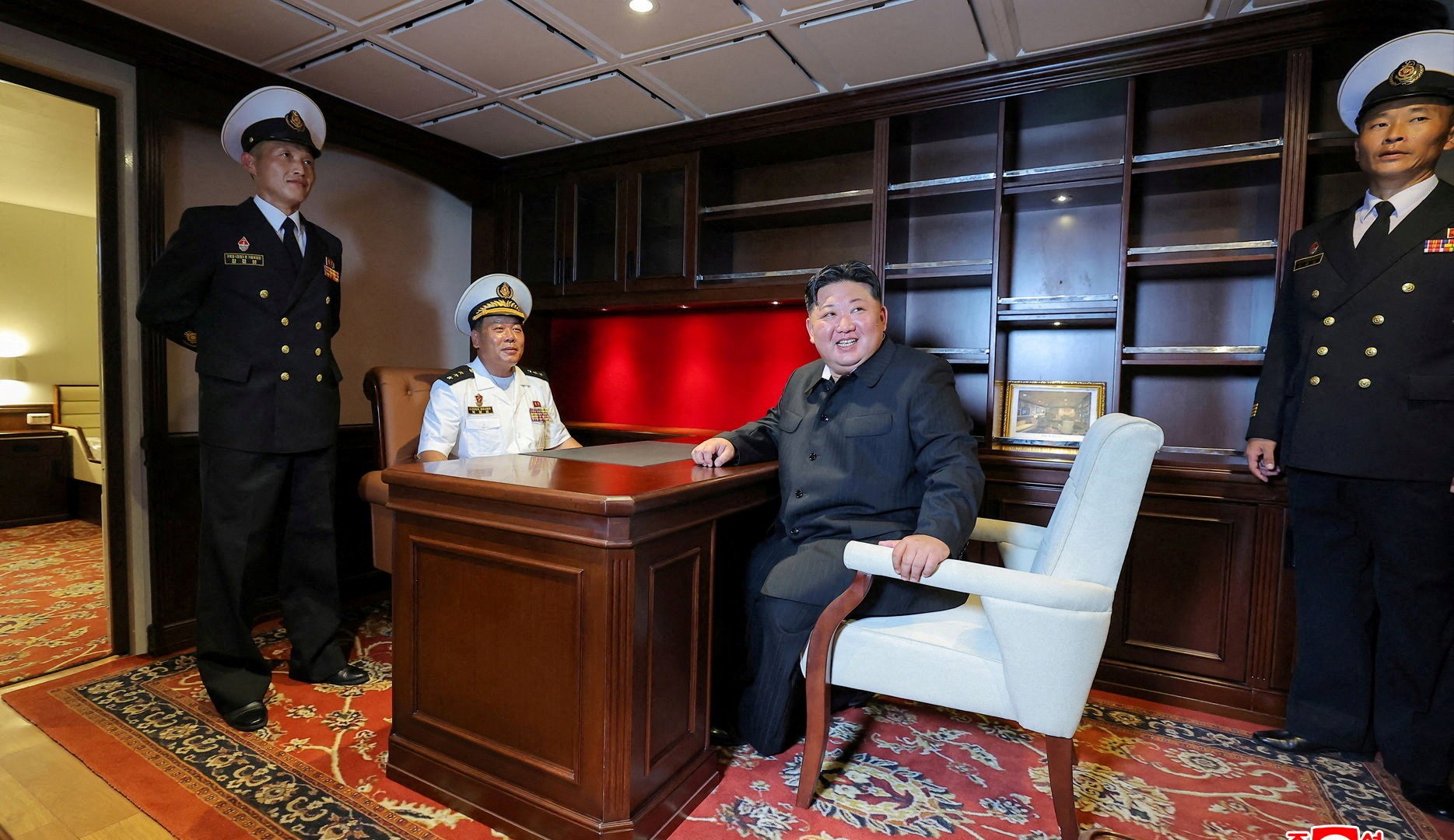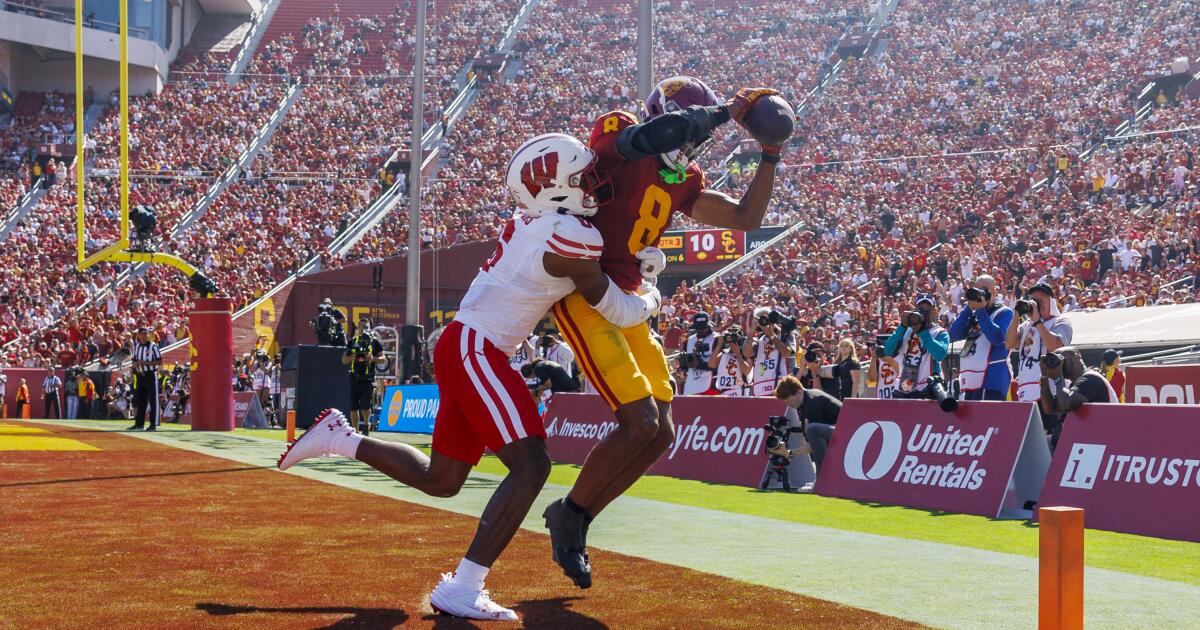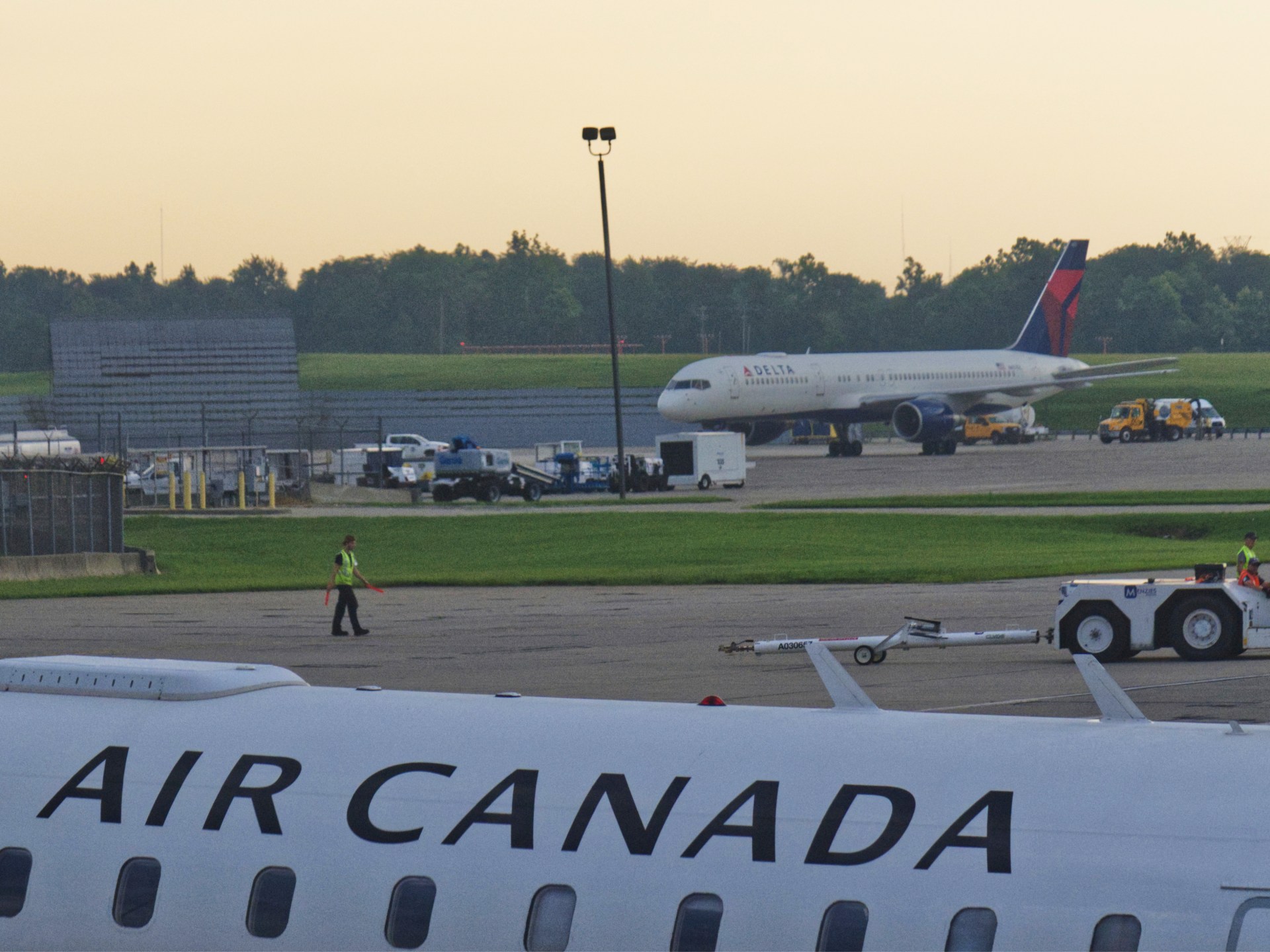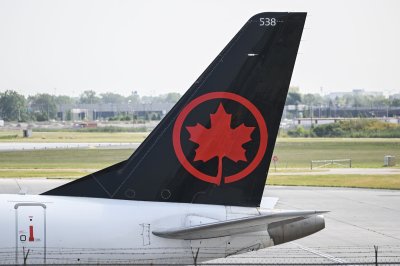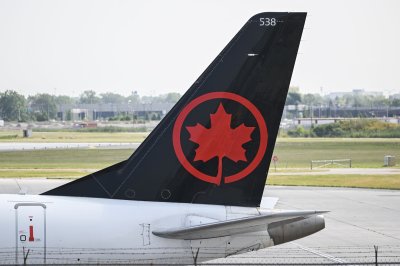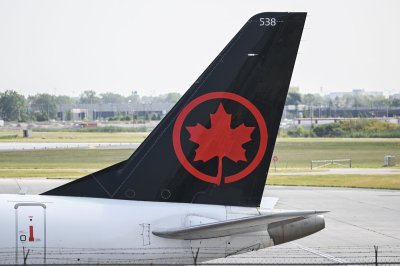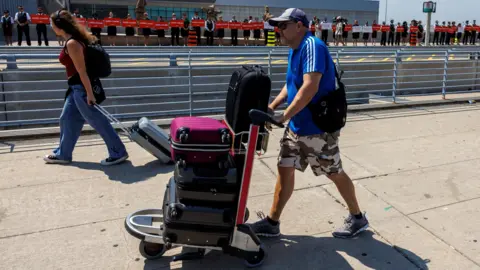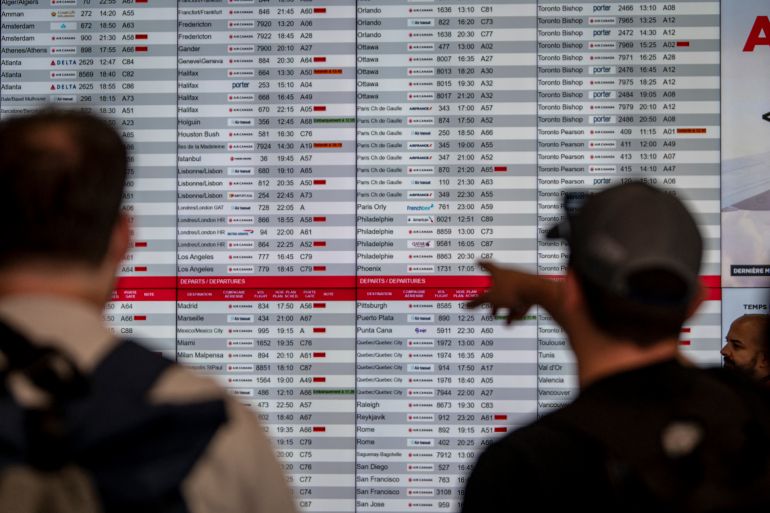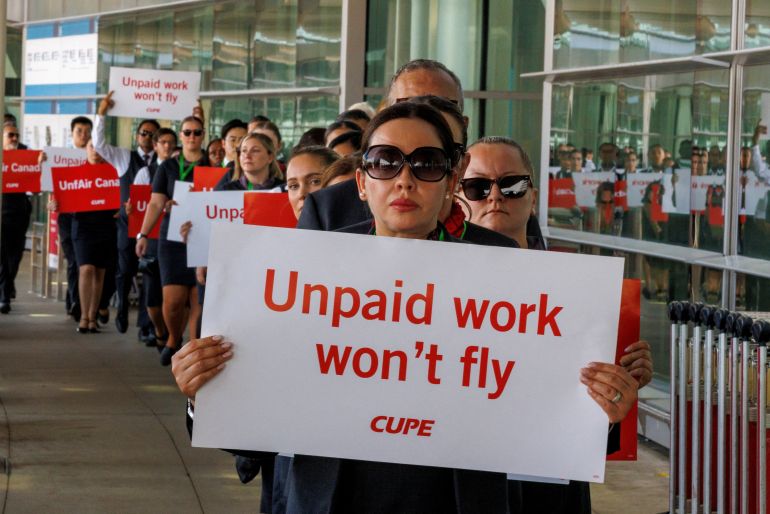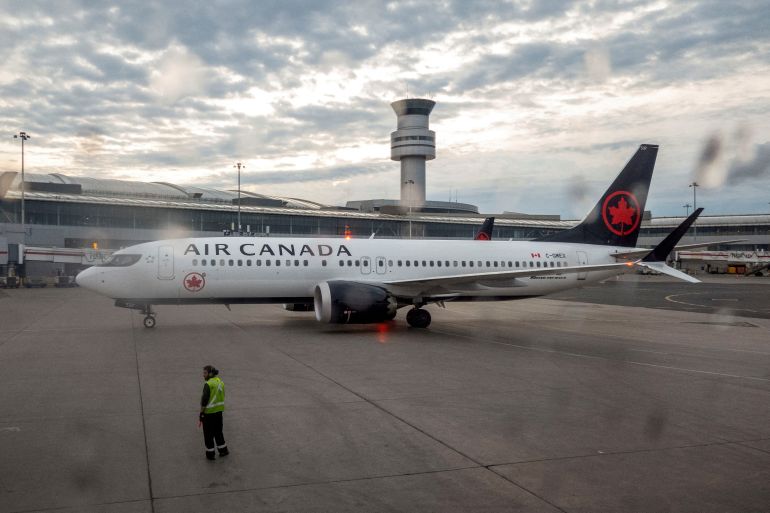An Air Canada plane is pictured at a gate at Montreal-Trudeau International Airport, in Montreal. On Saturday morning, all flights were cancelled after flight attendants went on strike. Photo Graham Hughes/EPA
Aug. 16 (UPI) — Hours after Air Canada flight attendants went on strike and the airline indefinitely paused all flights, the Canadian government intervenued Saturday and ordered operations to resume.
Jobs Minister Patty Haju ordered the company’s management and the union back to participate in binding arbitration to hash out their differences on wages and compensation. It wasn’t known when flights will resume after opereations were paused early Saturday.
“After eight months of negotiations by the parties, and after meeting with both parties last night and urging them to work hard to reach a deal, it is disappointing to have to conclude today that Air Canada and CUPE flight attendants are at an impasse and remain unable to resolve their dispute,” she said in a statement released Saturday aftetnoon Eastern time.
“The government firmly believes that the best deals are reached by the parties at the bargaining table. It has now become clear that this dispute won’t be resolved at the table. Canadians are increasingly finding themselves in very difficult situations and the strike is rapidly impacting the Canadian economy.”
She invoked Section 107 of the Canadian Labor Code, which directs the Canadian Relations Board to arbitrate the dispute.
“I am exercising this authority because it is critical to maintaining and securing industrial peace, protecting Canadians and promoting conditions to resolve the dispute,” she said. “Despite the parties’ resolution of several key differences, the CIRB is best positioned to help them find a solution on the outstanding items.”
Also, she extended the terms of the existing agreement until a new one is determined by an arbiter.
“This decision will help make sure that hundreds of thousands of Canadians and visitors to our country are not impacted because of cancelled flights,” she said. “Further, the shipments of critical goods such as pharmaceuticals and organ tissue, over 40% of which are moved by Air Canada, should continue to reach their destinations.”
The Air Canada union asked her to direct the parties to enter into binding arbitration.
But on Saturday afternoon, the union blasted the order to end the strike and posted images and video stirkers.
“Now, when we are at the bargaining table with an obstinate employer, the Liberals are violating our Charter rights to take job action and give Air Canada exactly what they want — hours and hours of unpaid labor from underpaid flight attendants, while the company pulls in sky-high profits and extraordinary executive compensation.
“This sets a terrible precedent. Contrary to the Minister’s remarks, this will not ensure labor peae at Air Canada.”
More than 130,000 travelers worldwide fly on the airline daily.
Canada’s largest airline has more than 1,000 flights, including 170 international ones, and from 50 Canadian airports. Between more than 50 U.S. airports and Canada, there are 430 daily flights.
Locked out at 1:30 a.m. EDT were 10,000 flight attendants at Air Canada and Air Canada Rouge represented by the Canadian Union of Public Employees. Air Canada Express, with regional 300 flights and operated by Jazz Aviation and PAl Airlines, is not affected.
The flight attendants went on strike at 12:58 a.m. EDT.
Picket lines had been set up at airports throughout Canada, the CBC reported.
The last negotiations were on Friday night and no new talks were scheduled.
On Wednesday, the airline served the union a statutory 72-hour lockout notice in response to the union’s 72-hour strike notice.
Air Canada was canceling flights ahead of the work stoppage.
“The carriers have since been gradually reducing their schedules of about 700 daily flights to manage the labour disruption created by CUPE’s strike notice,” the airline said. “Some 130,000 customers will be impacted each day that the suspension continues. At this time, Air Canada remains engaged and committed to negotiate a renewal to its collective agreement with CUPE.”
The airline said it “deeply regrets the labor disruption is having on customers.”
Wesley Lesosky, president of the Canadian Union of Public Employees’ Air Canada component, told the CBC it is up to the airline when they would be back on flights. The airline hadn’t responded to the media site.
Air Canada Chief Operating Officer Mark Nasr earlier said after an agreement, it could take up to a week to fully restart operations.
The carrier advised people not to go to the airport if they are booked on the airline.
“Air Canada will notify customers with imminent travel of additional canceled flights and their options,” the airline said. “For those customers due to travel soon whose flights are not yet cancelled, Air Canada has put in place a goodwill policy to allow them to rebook their travel or obtain a credit for future travel.”
Compensation differences
Flight attendants want to be compensated for work before the flights take off and after they land. Typically with most airlines, they get paid only for the hours they are in the air.
The airline, in its latest offer, proposes a 38% increase in total compensation that “would have made our flight attendants the best compensated in Canada.”
The union said a proposed 8% raise in the first year is offset by inflation.
Hajdu told The Canadian Press on Friday that it is “critical” for the two sides to return to the negotiating table.
“It’s very important that we stay focused on the two parties,” Hajdu said. “They have the primary responsibility to solve this. This is a corporation and a union who have all the tools they need, as well as tools from the federal mediation service, to get this deal done.”
On Friday, the minister said she wasn’t ready to intervene in the dispute, and saw a path forward to a deal because most issues have been resolved.
The union accused her of speaking “on behalf” of the company.
“Every party has expressed support for our effort to end unpaid work, except for the governing Liberal Party,” Lesosky said during a news conference Thursday.
Hajdu posted Friday on Facebook that she met with both sides.
“It is unacceptable that such little progress has been made. Canadians are counting on both parties to put forward their best efforts.”
Travel options
The carrier advised people not to go to the airport if they are booked on the airline.
“Air Canada will notify customers with imminent travel of additional cancelled flights and their options. For those customers due to travel soon whose flights are not yet cancelled, Air Canada has put in place a goodwill policy to allow them to rebook their travel or obtain a credit for future travel,” the airline posted.
Air Canada is partnered with Star Alliance, which includes more than 20 airlines, including Lufthansa and United Airlines. Code-sharing flights might be affected.
The New York Times listed ideas for travelers.
Travelers can change flight dates and receive a one-time $50 credit per passenger or opt for an airline credit equal to the value of the ticket for one year.
Travelers are eligible for a full refund requested through the app or website. The airline said it will attempt to rebook travelers on other airlines. Canada’s second-biggest airline is WestJet Airlines, though it has many fewer international destinations.
Because of peak summer travel, options may be limited.
Keelin Pringnitz and her family were returning from a European vacation to Ottawa, but were left stranded at Heathrow Airport in London.
“It was an end of my maternity leave kind of trip,” Pringnitz told CBC. “We went to the Faroe Islands and Norway, travelling through Air Canada to London.”
She said they could fly to the United States, but no assistance once they land there.
“It didn’t go over well with the line,” she said. “Nobody really seemed interested. Everybody seemed a little bit amused almost at the suggestion, or exasperated, because it is a bit ridiculous to offer to take stranded passengers to a different country to strand them there.”
For those with travel insurance, some plans include trip cancellations, including a strike.
The U.S. Department of Transportation, which has jurisdiction over Air Canada flights that depart from the U.S., has a similar policy like the Canadian government. Refunds must be given within 30 days and rebooked if possible. There is no mandatory compensation for delays.
“For U.S. travellers, the key now is to think strategically,” Anton Radchenko, AirAdvisor’s founder, said in a statement to USA Today. “Don’t just look for the fastest alternative route; look for the most stable one. This may mean flying via smaller, less congested hubs like Detroit or Minneapolis, where rerouting is easier, or securing refundable one-stop connections through partner airlines before seats vanish.
“Keep all receipts, track your communications with the airline, and, if possible, pay with a credit card that includes trip interruption coverage. Above all, treat this strike as a high-impact event that demands proactive planning, not reactive scrambling.”
